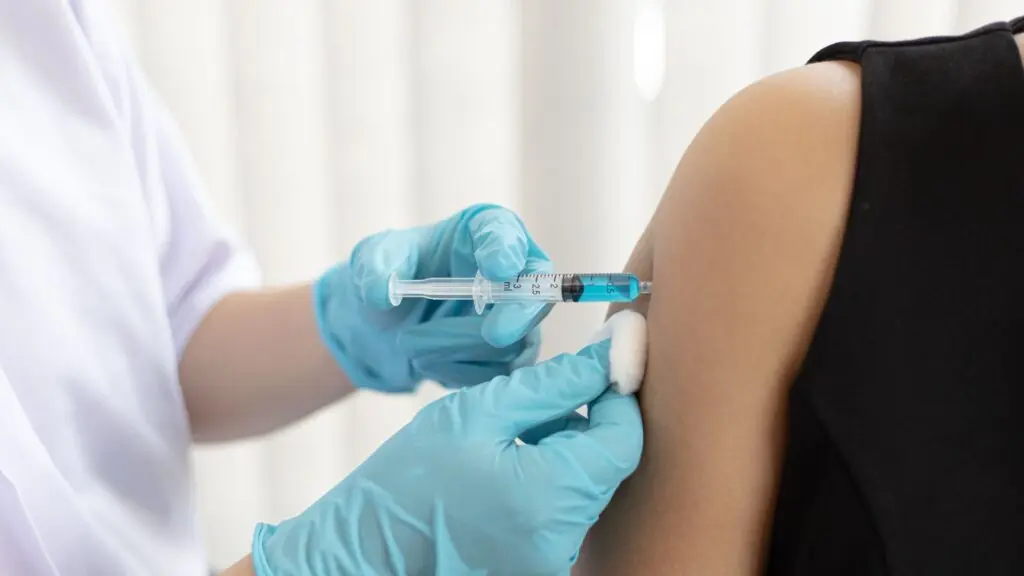
Making Sense of Stem Cell Injection Coverage and How the System Works?
The question “is stem cell injections covered by insurance” reflects a growing concern among patients exploring regenerative treatments. Stem cell therapy, particularly with mesenchymal stem cells (MSCs), is gaining popularity as a non-invasive, regenerative alternative to surgery or medication for chronic and degenerative conditions. Unfortunately, the vast majority of insurance providers—both public and private—do not cover stem cell injections unless the treatment is part of an FDA-approved clinical trial or used for specific blood-related cancers like leukemia.
Despite this limitation, many patients still opt for stem cell therapy, especially at international clinics like Regenamex in Mexico, where the quality of care is high and the cost significantly lower. MSC therapy involves the use of undifferentiated cells that can regenerate tissue, reduce inflammation, and rebalance the immune system. Patients undergoing stem cell injections often experience improvements in joint mobility, pain relief, energy levels, and overall function without relying on pharmaceuticals.
Assessing Who Should Explore Stem Cell Injection Insurance Coverage?

Living with chronic health issues like osteoarthritis, persistent back pain, autoimmune flare-ups, or lingering sports injuries can be overwhelming—especially when conventional treatments fall short or introduce unwanted side effects. It’s during this frustration that many begin exploring regenerative alternatives, prompting the critical question: is stem cell injections covered by insurance? For individuals seeking more than just symptom management, the financial implications of out-of-pocket treatments become a major concern.
Mesenchymal stem cell (MSC) therapy offers a comprehensive, non-invasive solution that targets inflammation, tissue degeneration, and immune imbalance at the cellular level. However, insurance policies in most countries don’t yet accommodate this emerging medical option. As a result, understanding coverage limitations and treatment value becomes essential for patients hoping to access lasting relief without financial strain.
Common candidates who explore coverage options include:
Patients with knee, shoulder, or hip degeneration
Individuals with autoimmune conditions like lupus or rheumatoid arthritis
Athletes recovering from tendon or ligament injuries
Seniors with chronic lower back or spinal disc pain
People with neurological or metabolic inflammatory disorders
In many cases, these patients have exhausted traditional insurance-covered treatments with limited success. When regenerative medicine becomes a last resort—or even a preferred early option—the issue of insurance coverage naturally arises.
Understanding the Expected Outcomes of Stem Cell Injection Therapy?

Even in the absence of insurance coverage, stem cell injections using mesenchymal stem cells (MSCs) are considered a valuable investment by many patients, especially those seeking long-term relief from chronic conditions. The regenerative effects of MSCs aren’t just anecdotal; they’re backed by ongoing research and clinical outcomes showing improvements in inflammation, joint function, and overall quality of life.
After receiving stem cell injections, patients often notice subtle but steady improvements beginning in the first few weeks. These initial changes—such as reduced stiffness, enhanced energy, and decreased reliance on medication—are just the start. As the regenerative process unfolds over several months, most people report deeper healing: improved joint mobility, nerve regeneration, and even a reduction in symptom flare-ups that previously disrupted daily activities. This gradual transformation can translate into years of improved function, especially when combined with healthy lifestyle habits and rehabilitation.
First 2–4 weeks: Reduced inflammation, decreased reliance on medications
4–8 weeks: Improvement in range of motion, flexibility, and energy
3–6 months: Regeneration of tissues (e.g., cartilage, nerves), pain reduction
6+ months: Long-term stabilization, improved quality of life, greater mobility
The regenerative nature of stem cell therapy means that the results are not just palliative—they are restorative. At Regenamex, the use of high-quality MSCs derived from Wharton’s jelly maximizes the therapeutic benefits, especially in chronic or degenerative cases.
The Superiority of Wharton’s Jelly-Derived MSCs in Regenerative Medicine
When comparing stem cell therapy options, the source of the cells plays a pivotal role. At Regenamex, we exclusively use MSCs derived from Wharton’s jelly—a nutrient-rich, gelatinous substance found in the umbilical cord. Unlike bone marrow or fat-derived cells, Wharton’s jelly MSCs are biologically younger, highly potent, and collected through non-invasive, ethical donations.
Key benefits of Wharton’s jelly MSCs include:
Higher concentrations of cytokines, growth factors, and anti-inflammatory proteins
No surgical harvesting required, unlike fat or bone marrow stem cells
Low immunogenicity, meaning minimal risk of rejection or side effects
Stronger regenerative capacity for tissues, nerves, cartilage, and more
This quality distinction matters—especially when insurance doesn’t cover your procedure. If you’re paying out of pocket, it’s critical to ensure the highest-quality stem cells are used for optimal outcomes.
Step-by-Step Guide to Receiving Stem Cell Injections at Regenamex?

Understanding how treatment works can significantly shift the way patients evaluate both the financial and therapeutic value of stem cell therapy. At Regenamex, each patient’s journey begins with a comprehensive medical evaluation, where physicians analyze medical history, existing conditions, and diagnostic imaging to tailor the most effective protocol. This ensures that every step is deliberate and customized, rather than a one-size-fits-all approach.
Once a treatment plan is established, dosing is determined based on the patient’s weight and condition severity—typically between 1 to 5 million mesenchymal stem cells per kilogram. These cells, sourced ethically from Wharton’s jelly, are delivered through a combination of intravenous infusions or targeted injections, depending on the medical needs. This precision in administration helps maximize the therapeutic impact while maintaining the highest standards of safety and care. Patients are guided throughout the process by a bilingual medical concierge team, ensuring comfort, clarity, and consistent support from arrival to post-treatment follow-up.
Treatment delivery may include:
Intravenous (IV) infusions for systemic conditions
Localized injections for joint-specific injuries or inflammation
Intrathecal injection for neurological conditions, if appropriate
The entire treatment is completed in 2 to 5 days, typically requiring 1 to 3 sessions. Post-treatment recovery includes hydration, rest, and supportive nutrition. Our clinic provides bilingual support, transportation, and ongoing follow-up care.
Reasons Patients Trust Regenamex Despite Lack of Insurance Coverage
If the answer to “is stem cell injections covered by insurance” is no, the next question becomes: where can I receive safe, effective, and affordable treatment? Regenamex has emerged as a global leader in regenerative medicine by offering premium care at significantly lower costs than U.S. or Canadian clinics.
Why choose Regenamex?
Fully licensed facility under Mexican health regulations
Treatments starting at just $2,500—compared to $20,000+ in the U.S.
Only uses Wharton’s jelly-derived MSCs—never adipose or bone marrow
Personalized dosing based on diagnostics
Transparent pricing, no hidden fees, full concierge travel support
For many international patients, traveling to Mexico for treatment not only reduces financial burden but also opens the door to a higher level of care with less red tape.
Explore more on our Stem Cell Therapy Mexico page or use our contact form to schedule a free consultation. For external research, review this Mayo Clinic article on regenerative therapy.
Frequently Asked Questions About Is Stem Cell Injections Covered by Insurance
When patients ask, "Is stem cell injections covered by insurance?" they are usually trying to determine whether the cost of a regenerative therapy—often thousands of dollars—will be absorbed by their healthcare provider. For most individuals living in the United States, Canada, or similar healthcare systems, the answer depends on whether the treatment has received FDA or local government approval for a specific condition. In nearly all cases involving orthopedic issues, autoimmune diseases, or chronic pain, stem cell therapy remains classified as investigational, meaning insurers are not obligated to reimburse the cost.
This lack of coverage does not mean the treatment is ineffective or untrusted; rather, it reflects how slowly insurance frameworks adapt to emerging science. Despite the out-of-pocket expense, many patients still pursue therapy at trusted clinics like Regenamex due to the unmatched regenerative potential of Wharton’s jelly-derived MSCs, transparent pricing, and international credibility. For patients without insurance support, choosing a clinic with both high standards and cost-effective care becomes crucial in the decision-making process.
The primary reason most insurance companies don’t cover stem cell therapy is because it’s still categorized as investigational or experimental by major regulatory bodies, including the FDA. This classification stems from the fact that many stem cell treatments, particularly those used for orthopedic or autoimmune conditions, have not yet completed the large-scale, long-term clinical trials required to shift them into the mainstream standard of care. Insurers typically rely on these approvals before adjusting their coverage models, and the regulatory process often lags behind scientific advancements.
Despite this gap, the clinical results from stem cell therapy—especially those using Wharton’s jelly-derived mesenchymal stem cells—are encouraging and continue to gain recognition worldwide. However, until this recognition becomes codified into insurance billing codes and government-approved treatment guidelines, coverage is unlikely to follow. Patients are left to either wait for broader adoption or seek reputable international clinics like Regenamex that offer high-quality, affordable care without the red tape.
At Regenamex, the price of stem cell injections typically falls between $2,500 and $12,000 USD. The final cost depends on several factors, including the complexity of your condition, how many stem cells are needed per kilogram of body weight, and the number of treatment sessions required to achieve the desired result. Each case is medically evaluated in advance to ensure transparency and proper planning.
Unlike many clinics that lack clarity in their billing, Regenamex is committed to up-front, all-inclusive pricing so that patients are never surprised by hidden charges. During the consultation process, our team will walk you through every element of your treatment plan—including cell count, delivery method (IV or localized injection), and support services like post-treatment care and international travel coordination—so you can make an informed decision aligned with your medical and financial goals.
While traditional health insurance plans may not cover stem cell therapy directly, some aspects of the treatment can still offer a degree of financial relief for certain patients. Many individuals have had success submitting detailed receipts and treatment summaries to their Health Savings Accounts (HSAs) or Flexible Spending Accounts (FSAs), allowing them to utilize pre-tax funds to offset a portion of the overall expense. This is particularly common for patients who itemize medical expenses or who work with financial advisors familiar with international medical treatments. Although approval is not guaranteed and depends on the guidelines of each HSA or FSA provider, this strategy is one potential way to mitigate out-of-pocket costs for regenerative therapy received at clinics like Regenamex.
Exploring medical tourism insurance can be a smart move for patients traveling abroad for stem cell therapy. While traditional health insurance typically doesn’t cover regenerative treatments, some specialized medical tourism policies do offer partial reimbursement for non-treatment-related costs such as airfare, lodging, medical complications, and follow-up visits. Coverage can vary widely depending on the insurer, the destination country, and the type of care received, so it’s essential to work with an advisor experienced in medical tourism. They can help determine whether your specific travel and treatment plans fall under the eligibility criteria of a policy and may also assist in processing claims. Being informed about these options ahead of time could significantly reduce your financial burden and provide peace of mind throughout your journey to Regenamex.
Regenamex has earned a strong reputation among patients worldwide by combining scientific precision with compassionate care. Our clinic operates under full licensure in Mexico and adheres to international medical standards, ensuring a treatment environment that prioritizes safety, sterility, and patient-specific outcomes. What truly sets us apart is our exclusive use of Wharton’s jelly-derived mesenchymal stem cells—among the most potent and biologically active available—paired with cutting-edge administration techniques customized to each patient’s needs.
In addition to exceptional clinical quality, Regenamex offers full transparency in pricing, concierge support for international travelers, and ongoing post-treatment care. Patients appreciate the honest, detail-oriented approach that eliminates hidden costs and simplifies the healing journey. From ethical sourcing to personalized protocols, Regenamex stands as a beacon of regenerative medicine for those seeking long-term results without the financial or bureaucratic obstacles found elsewhere.

